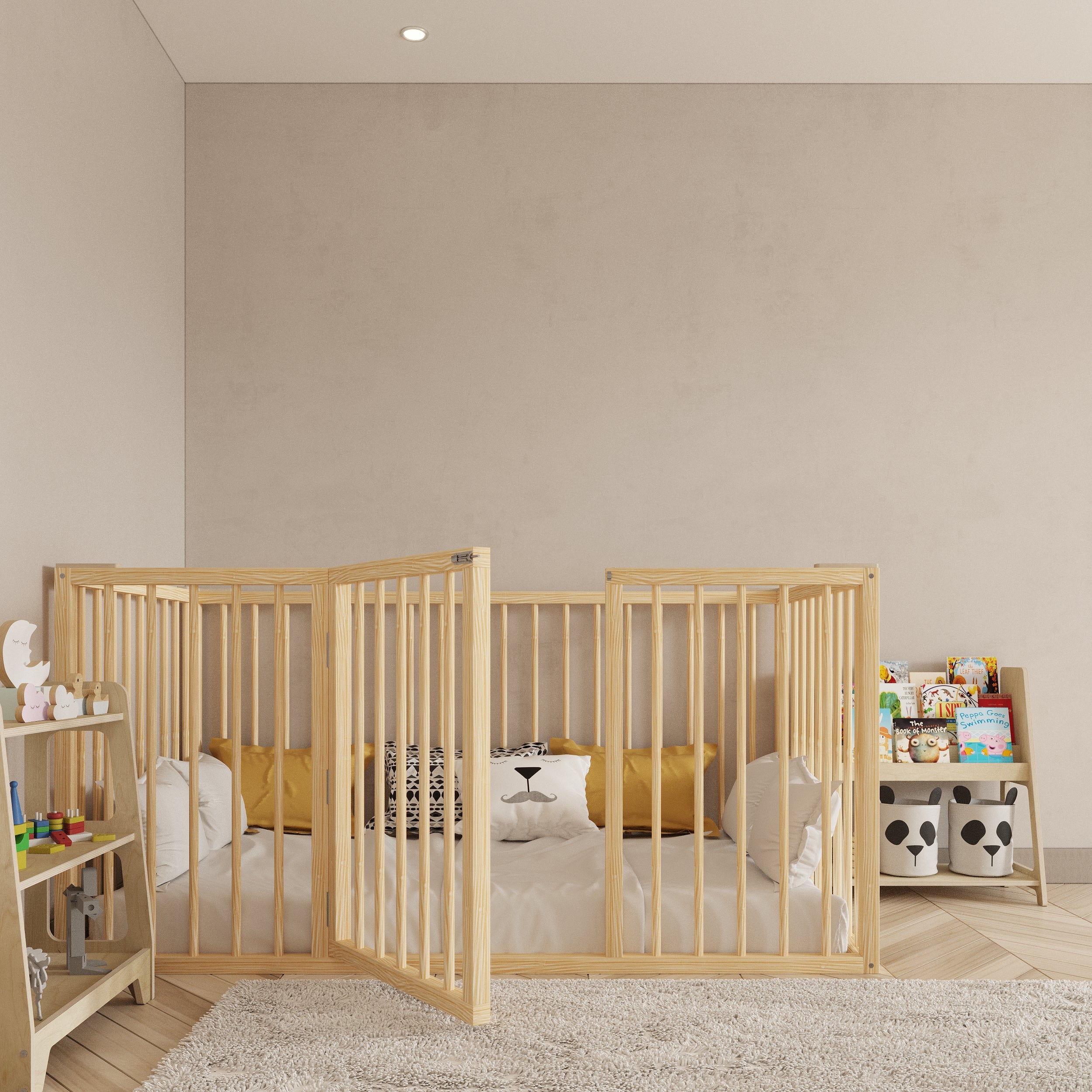
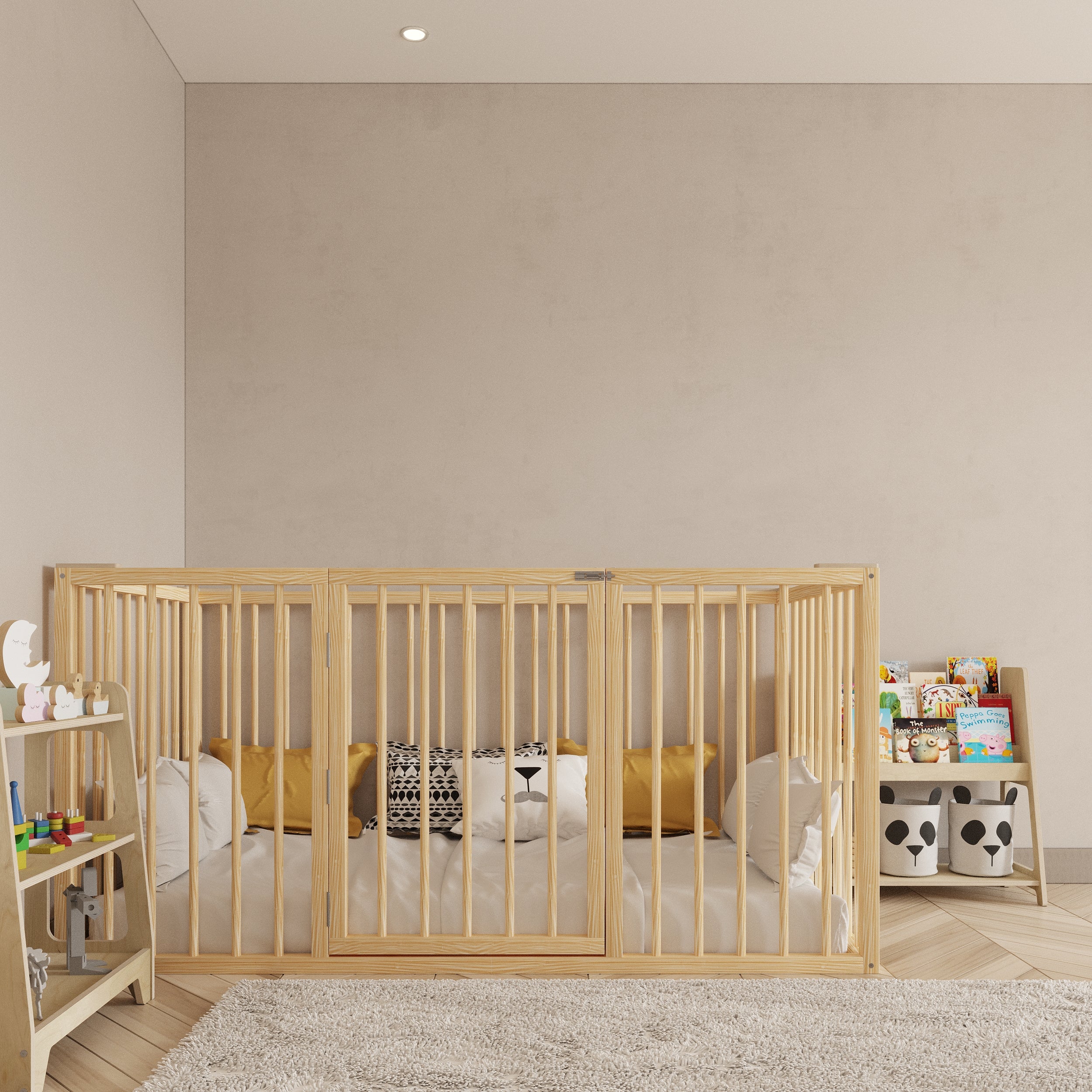
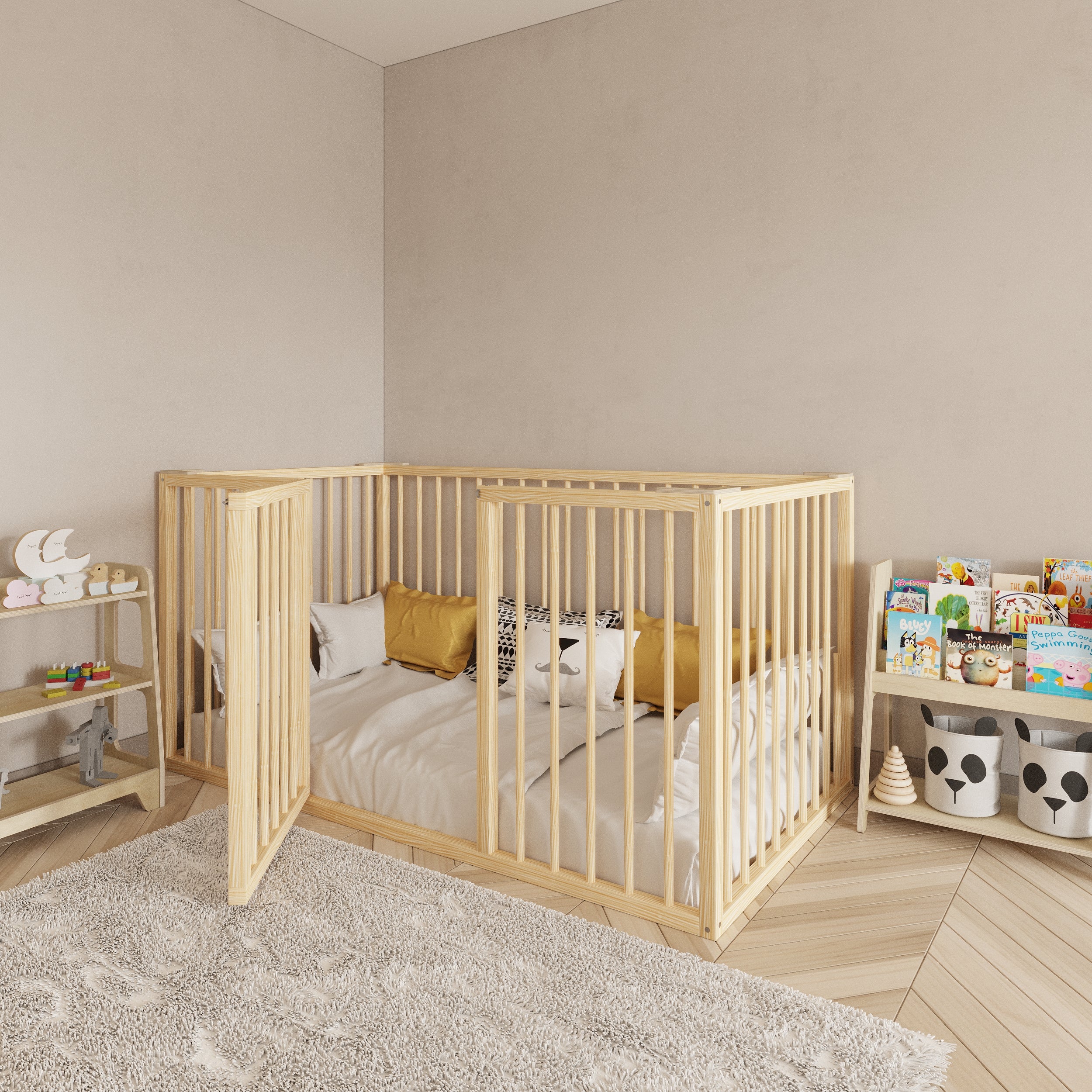
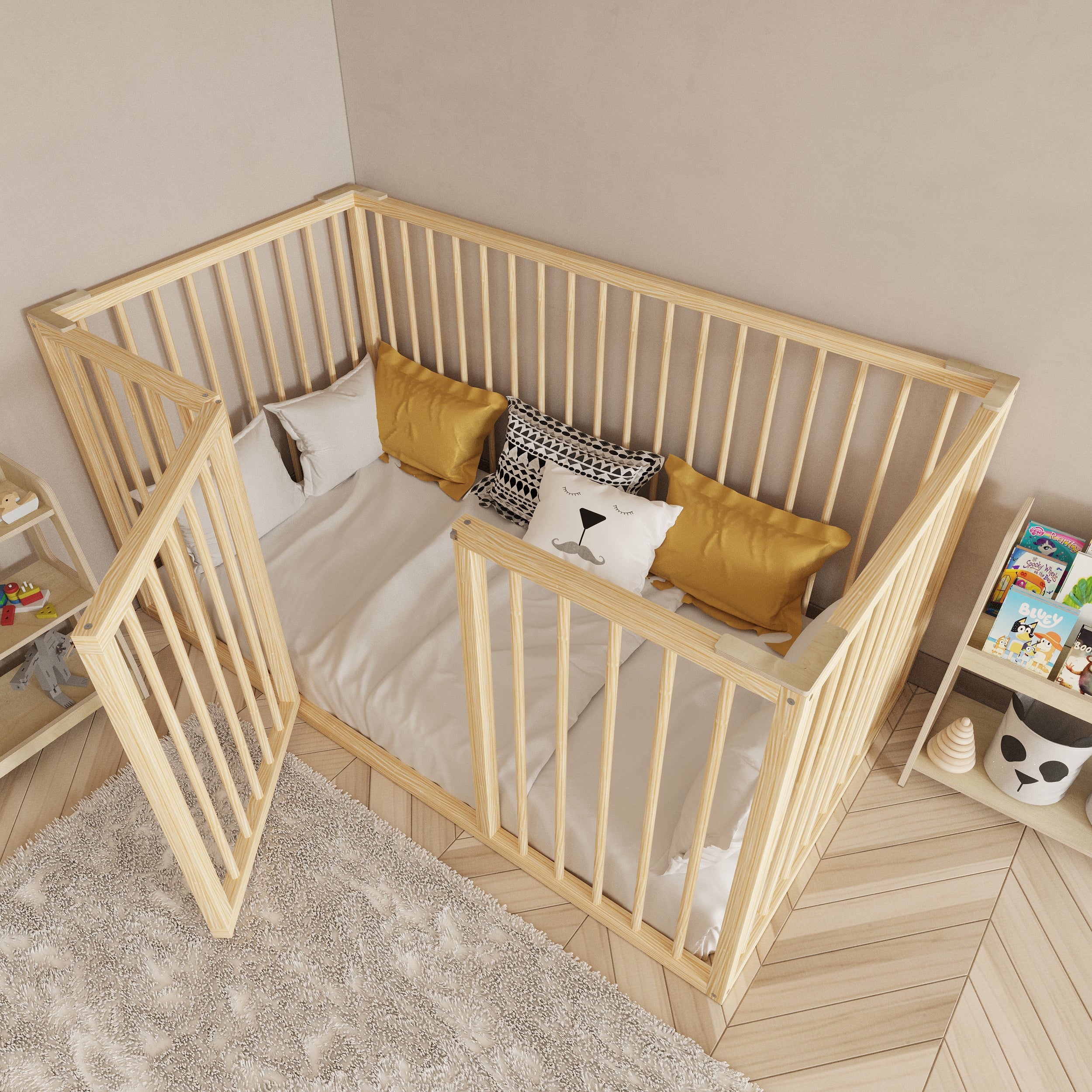
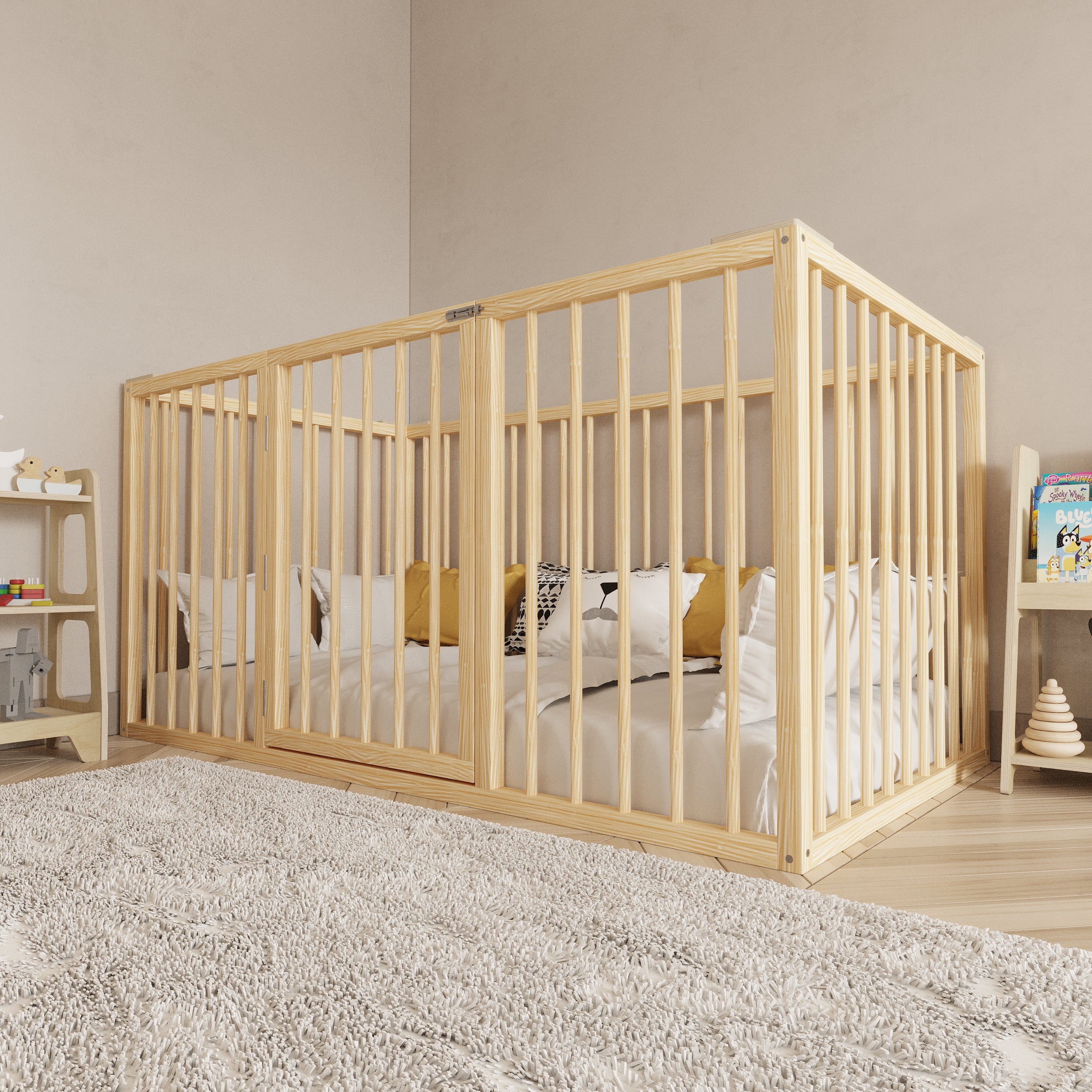
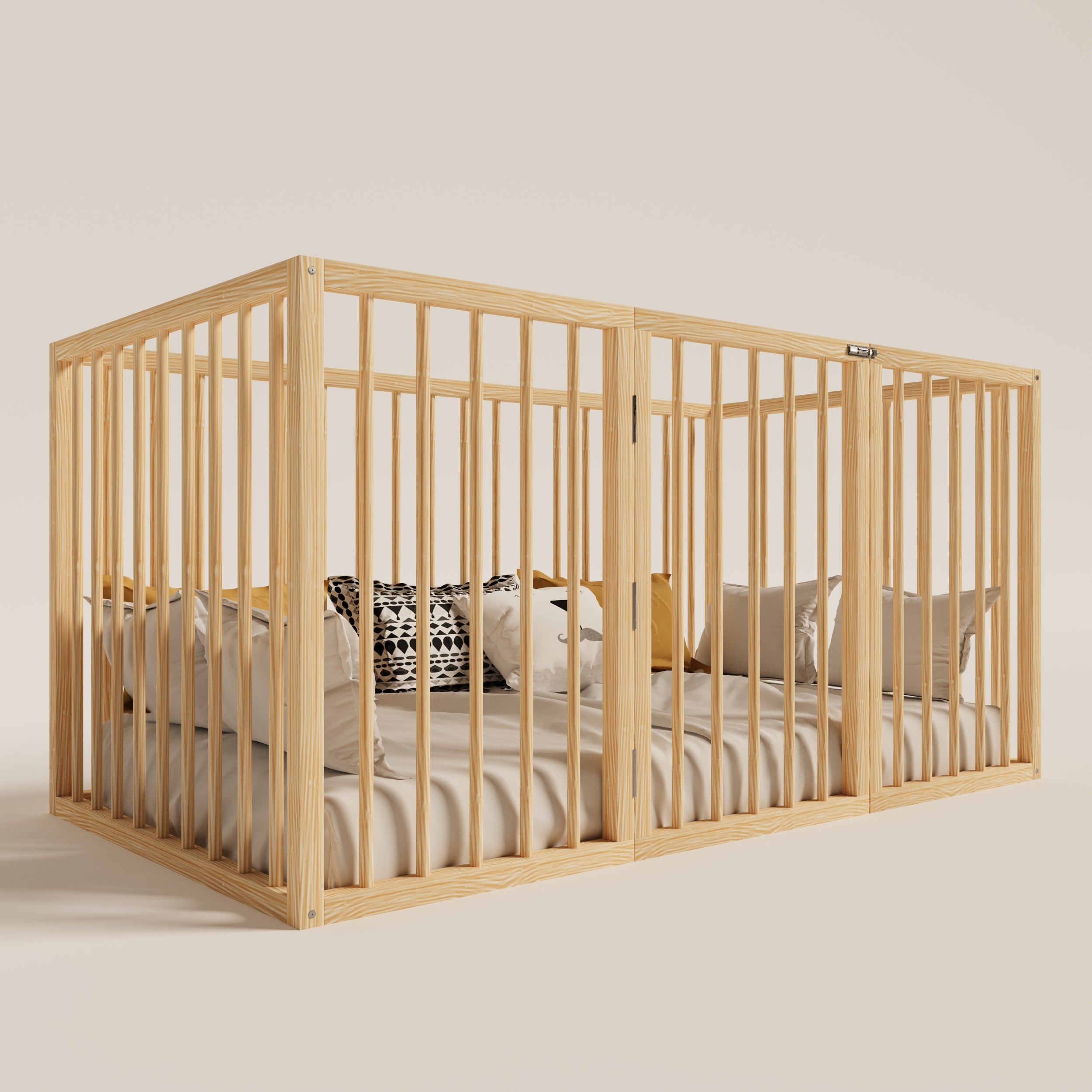
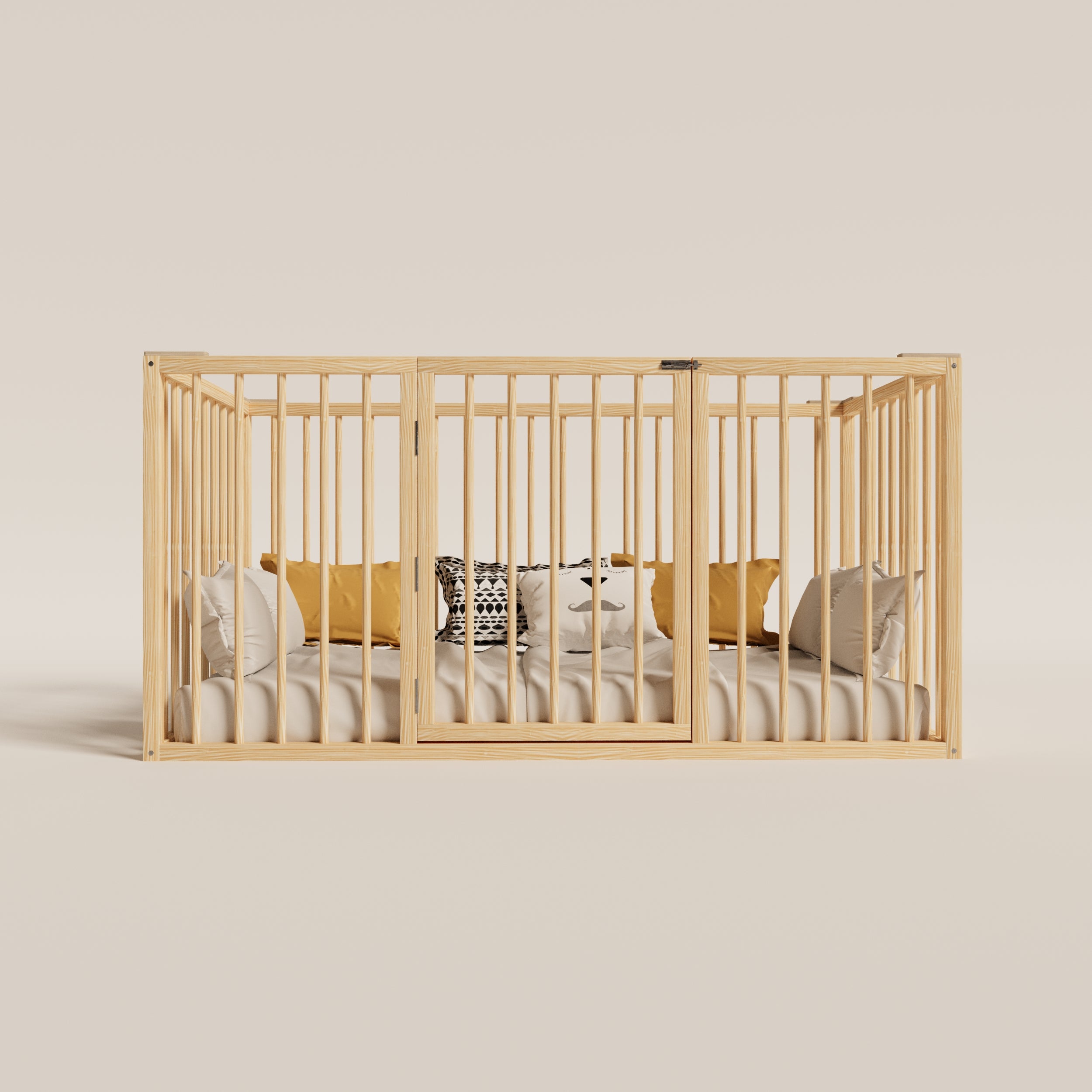
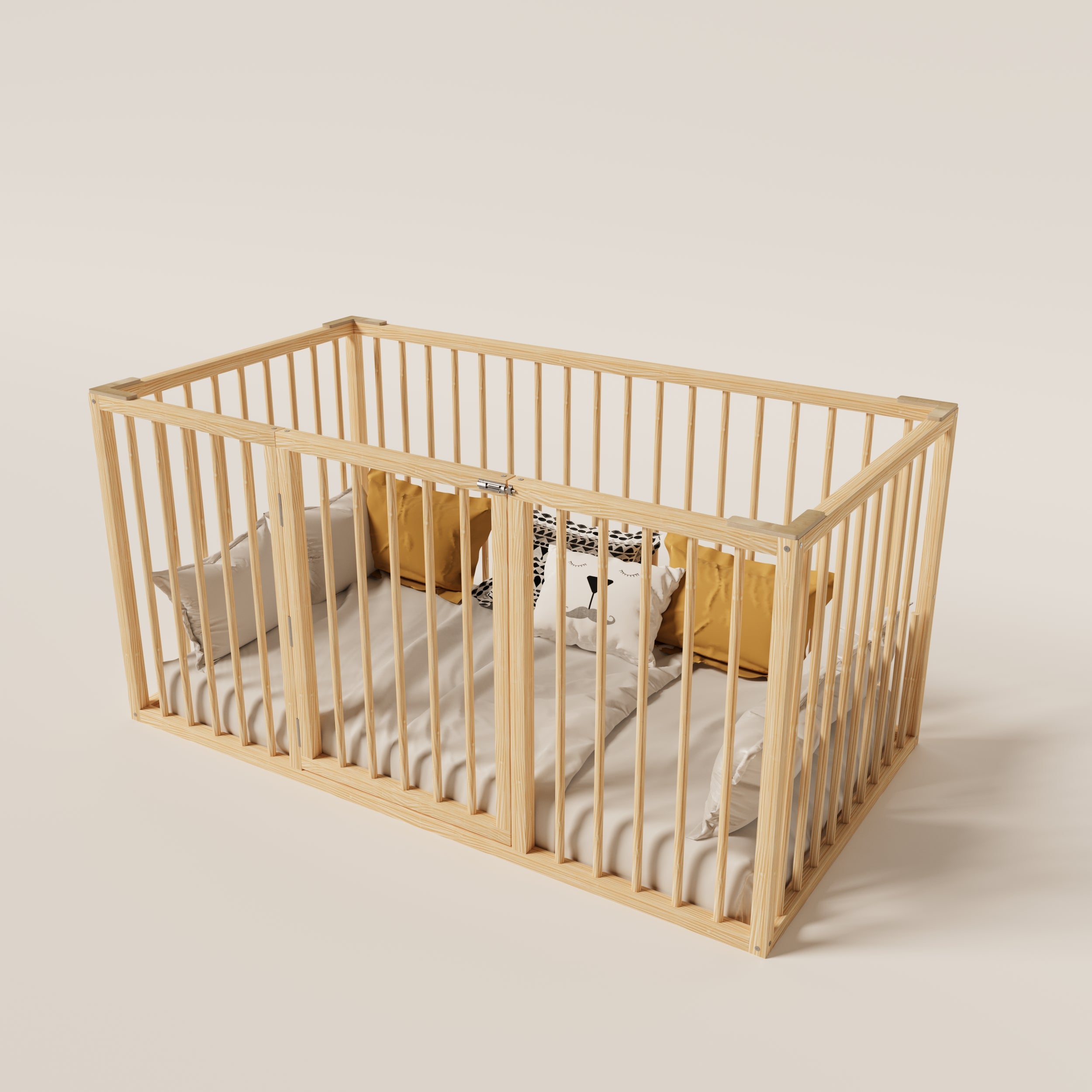
Playpen safety bed for special needs or autism
Pairs well with

Playpen safety bed for special needs or autism
Product details
Description
The playpen safety bed for special needs or autism, standing at a height of 38.5 inches, is designed to ensure your most precious loved one can spend time and sleep securely. The bed's unobtrusive design also allows for easy entry and exit, promoting independence and providing a space where individuals with special needs or autism can feel comfortable.
Our Playpen Safety Bed is more than just a place to sleep; it's a versatile sensory haven. The breathable mesh sides provide visibility, allowing caregivers to monitor their loved ones without disruption. It also acts as an excellent tool to help individuals develop better sleep routines. The bed's thoughtful design encourages a sense of security and serenity, promoting better sleep patterns. Choose the Playpen Safety Bed for your loved one, and provide them with the care and attention they deserve.
A good option from Montoddler for those looking for an autism bed or special needs bed product.
Dimensions
Weight Limit
Key Features
Materials
Customer Support
Shipping
This personalized Playpen safety bed for special needs or autism is a handcrafted product. If there are no specific requests, it will be shipped in 5 business days. However, if you have a special request such as adding your child's name, the shipping process may take up to 7 business days.
Sustainability
We strive to do our part to leave a better planet for future generations. We carefully select materials that meet high sustainability standards. For our energy needs, we rely on solar power, and we take steps to minimize our carbon footprint in every aspect of our operations.
Why Montoddler
Common Sleep Challenges & Patterns in Children with Special Needs
Difficulty with Transition Routines
Many children demonstrate rigidity around daily rituals or those with language delays have trouble communicating choices, experiencing shutdowns when familiar patterns alter unexpectedly. Something as simple as a later bedtime or forgotten lovey disrupts some sensitive children.
Tactile Sensitivities
Kids register textures, accessories like sock seams or tag labels against skin differently along neurological spectrums. This causes heightened stimulation or discomfort distracting rest.
Hyperactivity & Lower Impulse Control
High energy overwhelmed by myriad thoughts complicates herding active minds into relaxation at bedtimes Another corollary – impulsivity jumping out of bed repeatedly before settling.
Repetitious Behaviors
Stimming through motions like hand flapping or pacing serves regulation purposes. Yet the continued movement and endorphin reward cycles hamper children breaking repetitive patterns to rest.
Anxiety & Emotional Dysregulation
Some autistic children experience amplified worry about darkness, sleep itself or fixation on topics that delay shutting down sensory systems required for rest. Emotions heighten into meltdowns derailing bedtime routines.
Nighttime Wandering
A subset of children roam houses frequently in the night – whether due to dementia risks like Angelman’s Syndrome, seizures, medication impacts or impulse control challenges still maturing. Safety concerns arise if children exit bedroom spaces unattended.

Safety Bed for Autism
By examining common sleep challenges along the autism spectrum, families gain wisdom on tailored solutions serving specific children best. As each child's needs vary uniquely even alongside diagnosis similarities, an overview of the safety bed landscape equips parents and caregivers to make informed bedtime decisions easing difficulties.
We’ll explore features and purposes behind categories like enclosed canopy beds, weighted blankets, transition mattresses and more that transform bedrooms into secure sanctuaries for children with developmental exceptionalities.
Introducing our special needs safety bed
For families raising children on the autism spectrum or with sensory integration differences, establishing healthy sleep patterns often necessitates creative solutions beyond typical beds and bedroom environments. Repetitive motions, wandering tendencies, tactile sensitivities plus anxiety around enclosed spaces mean many children with developmental exceptionalities face barriers settling into restful slumber without specially designed assistance.
Thankfully a range of specialty safety beds and bedding accessories now exist supporting diverse sensory needs, communication styles and abilities among children who may thrive best with nurturing physical security plus comforting sensory input easing the transition into nightly restoration.
FAQs
Read
What ages is the Montoddler playpen safety bed designed for?
It is sized and designed for toddlers and preschoolers ages 18 months to 5 years old.
What conditions does it help accommodate?
It often benefits children with autism, ADHD, sensory disorders, anxiety, epilepsy or similar conditions needing an enclosed, distraction-free sleep space.
What safety features make this bed ideal for special needs?
Solid wood frame, and low profile floor bed design allows safe confinement, breathability, and accessibility without risk of falling.
Does my child need an autism diagnosis to benefit from this bed?
Not at all. It supports any children who sleep better within a cozy, enclosed environment filtering stimuli. No diagnosis required.
What if my child outgrows it by age 5?
Montoddler beds are built to last through at least age 6-7 before a standard twin bed may better fit a child's size and sleep needs.
Is assembly complicated?
Assembly just takes about 20 minutes for one person using the clear instructions and pre-attached guard rails. No tools required.
Can I use weighted blankets inside the bed?
Yes, the interior side pockets are perfect for holding weighted blankets, fidget toys or sensory items helping your child self-soothe to sleep.
What is the bed frame made from?
The frame uses solid American pine wood to meet strict safety standards for durability.
Is there a sleep transition version without the full enclosure?
For children needing less enclosure, Montoddler makes a lowered floor bed base with optional 2-side guard rails gradually helping kids feel at ease on open beds.
